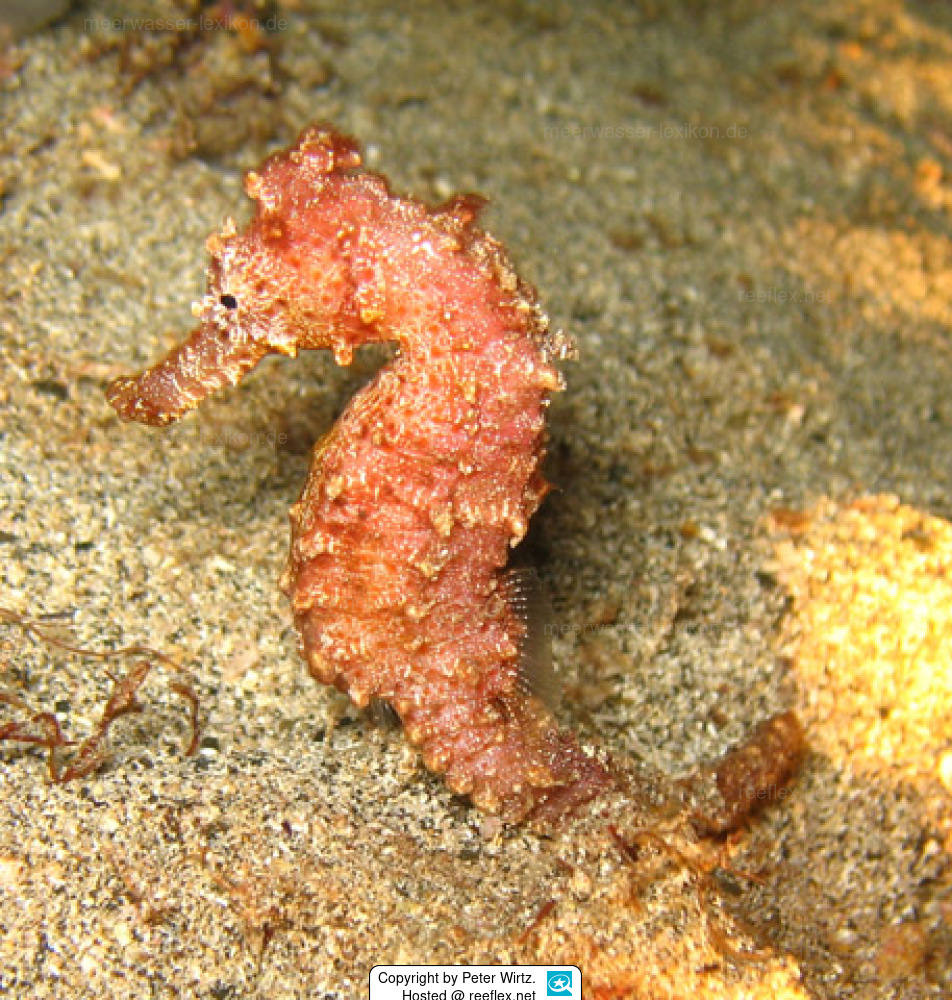Info
Distribution
Eastern Central Atlantic: Senegal to Angola. International trade is monitored through a licensing system (CITES II, since 5.15.04) and a minimum size of 10 cm applies.
Biology
Length type refers to height (= TL - head length). Ovoviviparous.
The male carries the eggs in a brood pouch which is found under the tail
Feeding intake.
The fish take a long time to eat at the beginning, before the food is taken up, a close inspection is carried out. After acclimatisation, the offered frozen food is eaten without problems. It should be noted that wild-caught fish behave differently than offspring when it comes to food intake. In the case of offspring, the size of the fish purchased also plays a role in the choice of food.
You can download the minimum requirements for keeping seahorses (in accordance with EC Regulation 338/97) from the Federal Agency for Nature Conservation as a PDF here: https://meerwasser-lexikon.de/downloads/BfN_Mindestanforderung_haltung_seepferdchen_hippocampus.pdf
Synonymised names
Hippocampus deanei Duméril, 1861 · unaccepted
Hippocampus kaupii Duméril, 1870 · unaccepted
Hippocampus punctulatus Kaup, 1856 · unaccepted







 Prof. Dr. Peter Wirtz, Madeira
Prof. Dr. Peter Wirtz, Madeira



























































